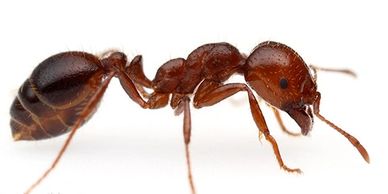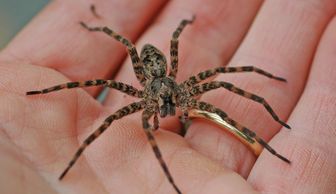Pest Facts
ANTS

There is an estimated 22,000 species of ants of which 12,500 have been identified. Some ants will raid stored food, others may damage indoor structures, some can damage agricultural crops directly and some will sting or bite.
SPIDERS

(non poisonous)
Females lay up to 3,000 eggs in one or more silk egg sacs, which maintain a fairly constant humidity level. Although spiders are widely feared, only a few species are dangerous to people. Spiders will only bite humans in self-defense, and few produce worse effects than a mosquito bite or bee-sting.
COCKROACHES
About 30 cockroach species out of 4,600 are associated with human habitats. About four species are well known as pests. Most species of cockroach are about the size of a thumbnail, but several species are bigger. Cockroaches occupy a wide range of habitats. Many live in leaf clutter, among the stems of matted vegetation, in rotting wood, in holes in stumps, in cavities under bark, under log piles and among debris. Cockroaches are mainly nocturnal and run away when exposed to light.
BEES

Honey bees
Honeybees are important pollinators for flowers, fruits, and vegetables. They live on stored honey and pollen all winter and cluster into a ball to conserve warmth. Many species still occur in the wild, but honeybees are disappearing from hives due to colony collapse disorder.
FLEAS

Fleas are small flightless insects. As external parasites of mammals and birds, they live by consuming the blood of their hosts. Their legs are long, the hind pair well adapted for jumping. A flea can jump vertically up to 7 inches and horizontally up to 13 inches making the flea one of the best jumpers of all known animals (relative to body size).
RODENTS

MICE, RATS
Rodents are mammals which are characterized by a single pair of continuously growing incisors in each of the upper and lower jaws.They are the most diversified mammalian order and live in a variety of terrestrial habitats, including human-made environments. They are known to invade homes for food and shelter.
TERMITES

Termites are among the most successful groups of insects on Earth colonizing most landmasses. Several hundred species are economically significant as pests that can cause serious damage to buildings, crops, or plantation forests. Many termite species can do great damage to unprotected buildings and other wooden structures. There are mainly two types of termites that homeowners have to be concerned with, subterranean and drywood.
BED BUGS

Bed bugs are parasitic insects that feed exclusively on blood. The common bed bug, is the best known as it prefers to feed on human blood. The name bed bug derives from their preferred habitat, warm houses and especially near or inside beds and bedding or other sleep areas. Bed bugs are mainly active at night, but are not exclusively nocturnal. A number of adverse health effects may result from bed bug bites, including skin rashes, psychological effects, and allergic symptoms.
WASPS

Paper wasps will generally only attack if they themselves or their nest are threatened. Since their territoriality can lead to attacks on people, and because their stings are quite painful and can produce a potentially fatal anaphylactic reaction in some individuals, nests in human-inhabited areas may present an unacceptable hazard
Contact Us
Send us an email !
CALL US !
For immediate service call us !
You can also stop by our office !
Hours
Monday - Friday : 8am - 4pm
Saturday : Closed
Sunday : Closed
Quality Pest Control LLC.
979-865-8882